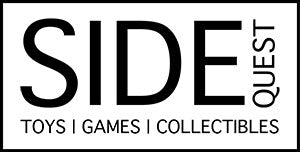How Minecraft was made
The Origins of Minecraft: How the Blocky Beast Came to Life
If you've ever punched a tree with your bare hands, constructed a towering castle brick by painstaking brick, or panicked at the unmistakable hiss of a sneaky Creeper, there's a good chance you've fallen under the blocky spell of Minecraft. From casual gamers to dedicated builders, Minecraft has taken the world by storm—gobbling up countless hours and inspiring endless creativity. But have you ever wondered how this gaming sensation actually came to life? Grab your diamond pickaxe, friends; we're about to mine into the fascinating journey of Minecraft's creation!
The Early Days: Enter Notch
In the beginning, there was Markus "Notch" Persson. Notch, a bearded, friendly-looking Swede with a brilliantly creative mind, spent much of his childhood tinkering with programming projects. Inspired by classic sandbox and adventure games such as Dungeon Keeper, Dwarf Fortress and Infiniminer, Notch dreamt of something grander—a virtual world that players could shape, mould, and call their very own.
In May 2009, he released what would become Minecraft’s first playable prototype, charmingly named "Cave Game"—a name that undoubtedly didn’t have the same catchy ring to it. Thankfully, a swift name change soon followed, and Minecraft was officially born. Initially, it was bare-bones gameplay, offering players a deceptively simple virtual landscape made purely from blocks: trees, hills, grass, and, of course, caves. But the seed of something amazing was already planted.
Alpha and Beta: Building Blocks for Greatness
You know how Minecraft lets you build gigantic castles and enormous sculptures? Well, funnily enough, that's how Minecraft itself was built too: block by careful block. Notch and his small but dedicated team kept adding exciting new features and updates—deepening gameplay, extending worlds and giving players more freedom with each patch. Modes such as Creative (for you imaginative, artistic types out there) and Survival (for anyone who enjoys "slightly terrifying" night-time escapades) were added, drawing in even more people into this strangely captivating world.
Minecraft started getting noticed—the internet quickly became packed with enthusiastic players sharing their creations online. Players built libraries. Players crafted massive gardens. People even constructed vast cities resembling Hogwarts, Middle-Earth, and London. And the most extraordinary thing? Minecraft hadn't even left beta yet!
The Mojang Era: Blocky Business Booms
Seeing Minecraft's growing popularity, Notch knew he'd tapped into something special. In 2010, he founded Mojang Studios alongside his friend Jakob Porser. Together with a small crew of talented individuals, they worked hard to keep Minecraft evolving, sparking creativity among millions of fans worldwide.
Community feedback became essential—players shared their dreams, frustrations, and suggestions. Mojang listened closely, constantly adding more mobs, new blocks, improved biomes, and even delightful Easter eggs (hello, Herobrine conspiracy theorists!). Players felt listened to, and Minecraft grew rapidly through word-of-mouth, becoming famous not from flashy TV adverts but simply from people sharing the things they'd built.
From Indie Darling to Global Phenomenon
In November 2011, Minecraft finally reached its official launch at MineCon in Las Vegas. Thousands of fans gathered dressed in homemade Creeper costumes, wielding cardboard diamond swords, celebrating this unique sandbox game going from indie experiment to global sensation. If ever there was proof of just how much the community had embraced Minecraft, this was it.
But Minecraft’s journey didn’t stop there. After its release, the game kept growing—new updates kept introducing cool new toys: Redstone allowed players to create complex machines and functioning computers inside the pixelated universe. Amazing biomes such as jungles, oceans and deserts added true diversity to exploration. Notch had built a living, breathing, endlessly imaginative world—and the community passionately joined alongside him.
Minecraft and Microsoft: A Partnership to Last
In 2014 came a sudden turn that surprised many fans: Microsoft purchased Mojang Studios, along with the rights to Minecraft, for a whopping $2.5 billion! Some players worried that corporate ownership might mark the end of Minecraft’s creative and indie heart. But thankfully, Microsoft understood the treasure they'd acquired, continuing to develop Minecraft with genuine respect for its original spirit.
With Microsoft's backing, Minecraft expanded even further, becoming available on almost every platform imaginable—from Xbox and PlayStation to smartphones, tablets, and even VR headsets. It was official: Minecraft had become a worldwide gaming icon earning its rightful place in gaming history.
A Cultural Landmark and an Educational Hero
Minecraft became much more than just another game: it’s become a cultural icon, a timeless creative tool, and even an educational powerhouse. Schools worldwide started using "Minecraft: Education Edition" to teach everything from maths and history to teamwork and creative problem-solving.
In addition, the explosion of Minecraft content creators emerged. People like StampyLongHead, Mumbo Jumbo, and DanTDM built entire careers out of creating vibrant, funny, and informative YouTube videos, exposing the world of Minecraft to an ever-growing audience of new gamers. Who knew virtual block-building could create full careers?
The Legacy Continues… Block by Block
Today, Minecraft continues to evolve, delight, inspire, and even surprise its millions of dedicated fans worldwide. Frequent updates add exciting new dimensions to the game (literally, in some cases—hello, Nether update!). Mojang and Microsoft work tirelessly with player feedback, improving Minecraft with each version and keeping it fresh and exciting for new and old fans alike.
Through passion, creativity, collaboration, and a bond between Mojang and its fiercely loyal community, Minecraft has grown from a modest alpha build by a single Swedish programmer to one of the world's most beloved and successful games ever created.
So next time you place blocks to rebuild Hogwarts, dodge skeleton arrows, or bake an in-game cake to celebrate stopping an army of zombies, take a moment to appreciate just how incredible Minecraft’s journey has been. And importantly: never stop mining, crafting, and dreaming, because who knows what might come next—in this amazing, blocky world or beyond?
